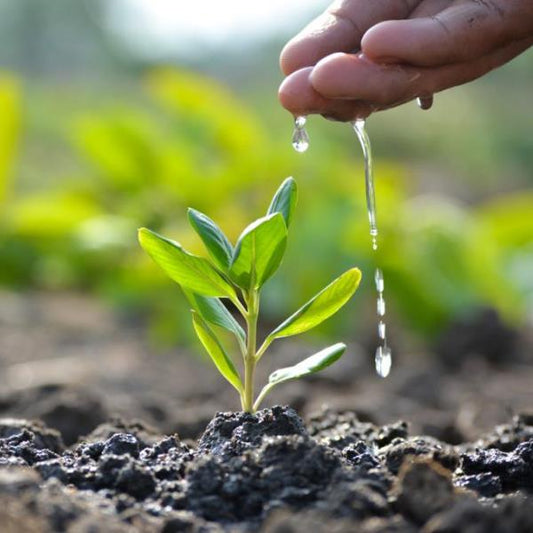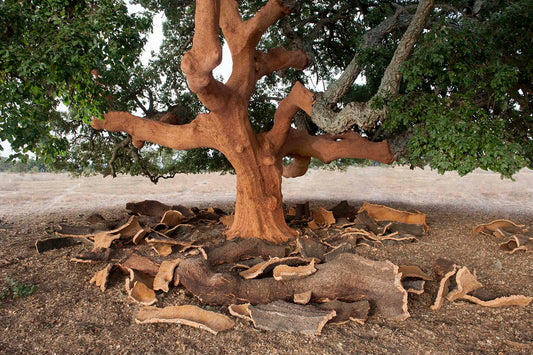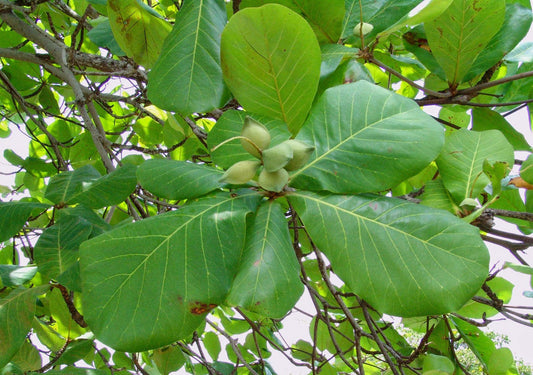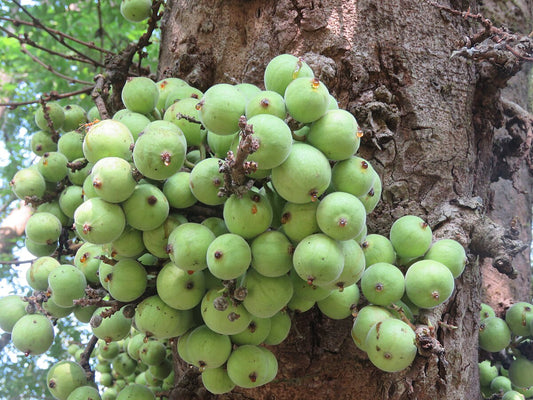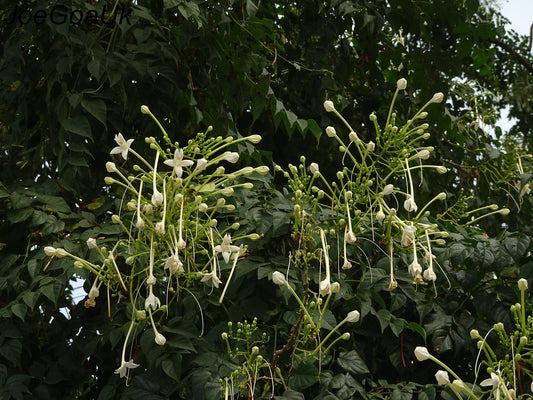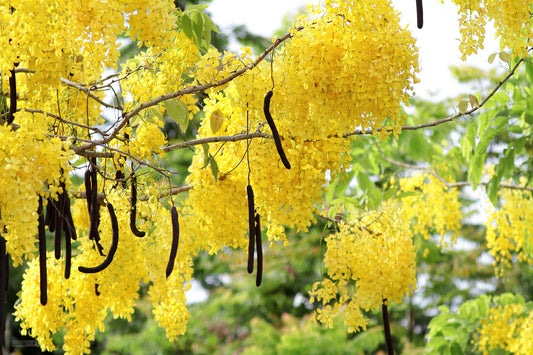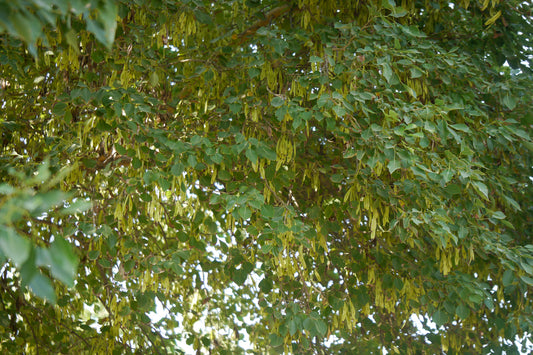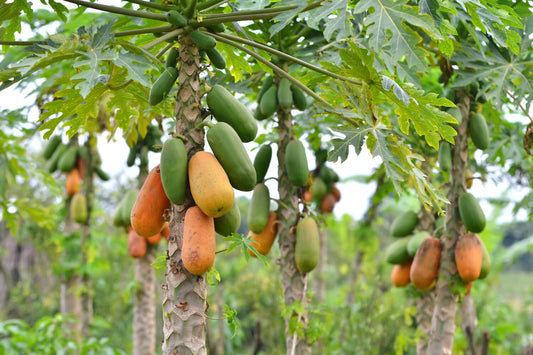

The Siris tree, a magnificent species native to the Indian subcontinent and other parts of Asia, holds a special place in local ecosystems and cultures. With its striking appearance, diverse uses, and ecological significance, the Siris tree is celebrated for its beauty, resilience, and m Read more
Trending
Trees for Corporates
Siris Tree
You may also like
Corporate Plantations
Siris Tree Facts
Explore intriguing facts about the Siris tree, scientifically known as Albizia lebbeck, celebrated for its ornamental flowers, timber, and medicinal properties. Learn about its native range, historical uses, and distinctive features.
Siris Tree Ecology
Delve into the ecological role of Siris trees in tropical and subtropical ecosystems. From providing shade and habitat for wildlife to enhancing soil fertility and nitrogen fixation, Siris trees play a vital role in ecosystem function and biodiversity conservation.
Siris Tree Habitat
Learn about the natural habitat of Siris trees, including dry forests, riverbanks, and urban landscapes. With adaptations to diverse soil types and climatic conditions, Siris trees thrive in various habitats, supporting biodiversity and ecological balance.
Siris Tree Growth and Adaptations
Gain insights into the growth patterns and adaptations of Siris trees to tropical environments. From fast-growing foliage for shade and shelter to nitrogen-fixing nodules on roots, Siris trees exhibit unique traits for surviving and thriving in diverse ecosystems.
Siris Tree Cultivation
Learn about essential cultivation practices for growing Siris trees in home gardens and agroforestry systems. From selecting suitable planting sites to providing proper care and maintenance, discover how to cultivate healthy and flourishing Siris specimens.
Siris Tree Uses
Explore the diverse uses of Siris trees for human communities in tropical regions. From harvesting timber for construction and furniture to using bark and leaves for traditional medicines, Siris trees have sustained livelihoods and cultural practices for centuries.
Siris Tree Economic Importance
Delve into the economic significance of Siris tree products and industries in tropical areas. From generating income through timber harvesting and non-timber forest products to supporting local handicrafts and agroforestry enterprises, Siris trees contribute to regional economies and sustainable livelihoods.
Siris Tree Environmental Benefits
Discover the environmental benefits of planting Siris trees for land restoration and biodiversity conservation. From stabilizing riverbanks and preventing erosion to providing shade and microhabitats for wildlife, Siris trees offer valuable ecosystem services in tropical landscapes.
Siris Tree Medicinal Uses
Learn about the medicinal properties of Siris tree products in traditional medicine systems. From using bark and leaves for treating skin ailments to utilizing seeds for respiratory disorders, Siris trees provide essential resources for human health and well-being.
Siris Tree Conservation
Understand the conservation challenges facing Siris trees due to habitat loss and overexploitation. From promoting sustainable harvesting practices to establishing protected areas and community-based conservation initiatives, efforts are underway to safeguard Siris populations and tropical ecosystems.
Siris Tree Pest and Disease Management
Explore common pests and diseases that affect Siris trees and strategies for prevention and control. From insect pests like borers and caterpillars to fungal pathogens causing leaf spots and cankers, integrated pest management practices can help maintain tree health.
Siris Tree Symbolism and Cultural Significance
Discover the cultural symbolism and spiritual significance of Siris trees in tropical cultures and traditions. From representing resilience and wisdom to being associated with fertility and prosperity, Siris trees hold profound cultural meanings and values.
Siris Tree Myths and Legends
Explore myths, legends, and folklore associated with Siris trees in tropical folklore and oral traditions. From tales of sacred groves and guardian spirits to stories of love and transformation, Siris trees have inspired human imagination and storytelling for generations.
Siris Tree Art and Crafts
Learn about the artistic and craft uses of Siris tree materials in traditional handicrafts and artisanal products. From carving wood into sculptures and utensils to using bark and fibers for weaving baskets and mats, Siris trees have provided essential resources for cultural expression and livelihoods.
Siris Tree Research and Education
Discover research initiatives and educational programs focused on Siris tree biology, ecology, and conservation. From studying genetic diversity and seed propagation to raising awareness about sustainable resource management, research and education efforts contribute to informed decision-making and conservation action.
Siris Tree Traditional Knowledge
Explore traditional knowledge systems related to Siris trees held by indigenous communities and tropical dwellers. From harvesting practices and cultural ceremonies to medicinal plant use and ecological wisdom, Siris trees are integral to tropical cultures and livelihoods.
Siris Tree Climate Resilience
Learn about the role of Siris trees in climate resilience and adaptation in tropical regions. From providing shade and moisture retention to enhancing soil organic matter and carbon sequestration, Siris trees contribute to ecosystem resilience and livelihood security in the face of climate change.
Siris Tree Agroforestry
Explore the potential of Siris trees in agroforestry systems for sustainable land use and livelihoods. From integrating tree planting with crop cultivation to enhancing soil fertility and water conservation, Siris trees offer multiple benefits for smallholder farmers and rural communities in tropical areas.
Siris Tree Ecotourism
Discover opportunities for eco-tourism and community-based tourism centered around Siris trees and tropical landscapes. From guided nature walks and cultural exchanges to sustainable tourism initiatives and forest camping experiences, Siris trees offer immersive experiences for travelers and nature enthusiasts.
Siris Tree Global Distribution
Explore the global distribution of Siris trees and their significance in tropical ecosystems worldwide.
FAQ
What is a Siris tree?
A Siris tree, scientifically known as Albizia lebbeck, is a deciduous tree native to the Indian subcontinent and other parts of Asia. It belongs to the Fabaceae family and is valued for its timber, medicinal properties, and ornamental value.
Where are Siris trees typically found?
Siris trees are commonly found in tropical and subtropical regions across Asia, including India, Sri Lanka, Bangladesh, Myanmar, and Thailand. They thrive in a variety of habitats, including dry forests, savannas, and riverbanks, where they play a vital role in local ecosystems.
How tall can a Siris tree grow?
Siris trees can grow up to 15-25 meters tall, with a spreading crown and bipinnate leaves that give them a fern-like appearance. They have a moderate growth rate and can reach maturity within 10-15 years under favorable conditions.
What climate do Siris trees prefer?
Siris trees prefer hot and humid climates with well-distributed rainfall throughout the year. They are adapted to tropical and subtropical environments where temperatures range from 20°C to 35°C and annual rainfall exceeds 1000 millimeters.
How long until a Siris tree matures?
Siris trees typically take 10-15 years to reach maturity and begin producing seeds, although they may start flowering earlier under optimal growing conditions. Once mature, Siris trees produce clusters of small, creamy-white flowers that are pollinated by bees and other insects.
How are Siris trees propagated?
Siris trees are primarily propagated through seeds, which are contained within pods produced by the trees. The seeds are collected, cleaned, and germinated in nurseries before being transplanted to the field or garden. Siris trees can also be propagated through stem cuttings or air layering.
What are the uses of Siris trees?
Siris trees have various uses, both practical and cultural. They are valued for their durable timber, which is used in construction, furniture making, and boat building. The bark, leaves, and seeds of Siris trees are also used in traditional medicine for treating various ailments.
Are Siris trees resistant to pests and diseases?
Siris trees are generally resistant to pests and diseases, but they may be susceptible to certain pathogens and environmental stressors in specific conditions. Proper care, including regular watering, pruning, and pest management, can help maintain tree health and prevent issues.
Can Siris trees be grown in gardens or urban landscapes?
Yes, Siris trees can be grown in gardens, parks, and urban landscapes as ornamental specimens for their attractive foliage and moderate size. They prefer hot, humid climates and well-drained soil, making them suitable for tropical and subtropical regions with ample sunlight.
What pests and diseases affect Siris trees?
Siris trees may be susceptible to various pests and diseases, including fungal infections such as powdery mildew and root rot, as well as insect pests such as aphids and caterpillars. Proper cultural practices and pest management measures can help prevent and control these issues.
How do Siris trees contribute to soil health?
Siris trees play a vital role in improving soil fertility and structure through their ability to fix nitrogen in the soil. They form symbiotic relationships with nitrogen-fixing bacteria in their root nodules, converting atmospheric nitrogen into a form that plants can use for growth.
Are there any cultural rituals associated with Siris trees?
Siris trees have cultural significance in many societies and are often associated with themes of resilience, renewal, and spiritual awakening. They are revered in Hindu and Buddhist traditions and are often planted near temples, shrines, and sacred sites as symbols of prosperity and protection.
Do Siris trees attract any specific wildlife species?
Siris trees provide habitat and food for various wildlife species, including birds, mammals, insects, and reptiles. Birds are attracted to the tree's flowers and fruits, while mammals such as monkeys and squirrels feed on the seeds and foliage. Insects and bees pollinate the flowers, contributing to ecosystem biodiversity.
Can Siris trees tolerate drought conditions?
Siris trees are moderately tolerant of drought conditions once established but prefer well-drained soil and regular watering during dry periods. Their deep root systems enable them to access groundwater and withstand extended periods of water scarcity, making them suitable for planting in regions with irregular rainfall patterns.
Most Popular
Connect with us
-
👥 Corporates
If you are looking for:
- 🌲 Tree Plantation Events
- 📊 CSR Projects
📧 corporate@growbilliontrees.com
📞 +91 9699723523
💬 WhatsApp (Only): +91 9370599291
🕒 Mon - Sat | 10am - 7pm IST
-
🧩 Tree Plantation NGOs
If you are looking for:
- 💰 Financial Assistance
- 🤝 Operational Support
📧 support@growbilliontrees.com
📞 +91 9699723523
💬 WhatsApp (Only): +91 9370599291
🕒 Mon - Sat | 10am - 7pm IST
-
🌼 Individuals
If you are looking for:
- 👥 Group Tree Plantation Drive
- 🌳 Bulk Tree Plantation
📞 +91 9699723523
💬 WhatsApp (Only): +91 9370599291
🕒 Mon - Sat | 10am - 7pm IST



